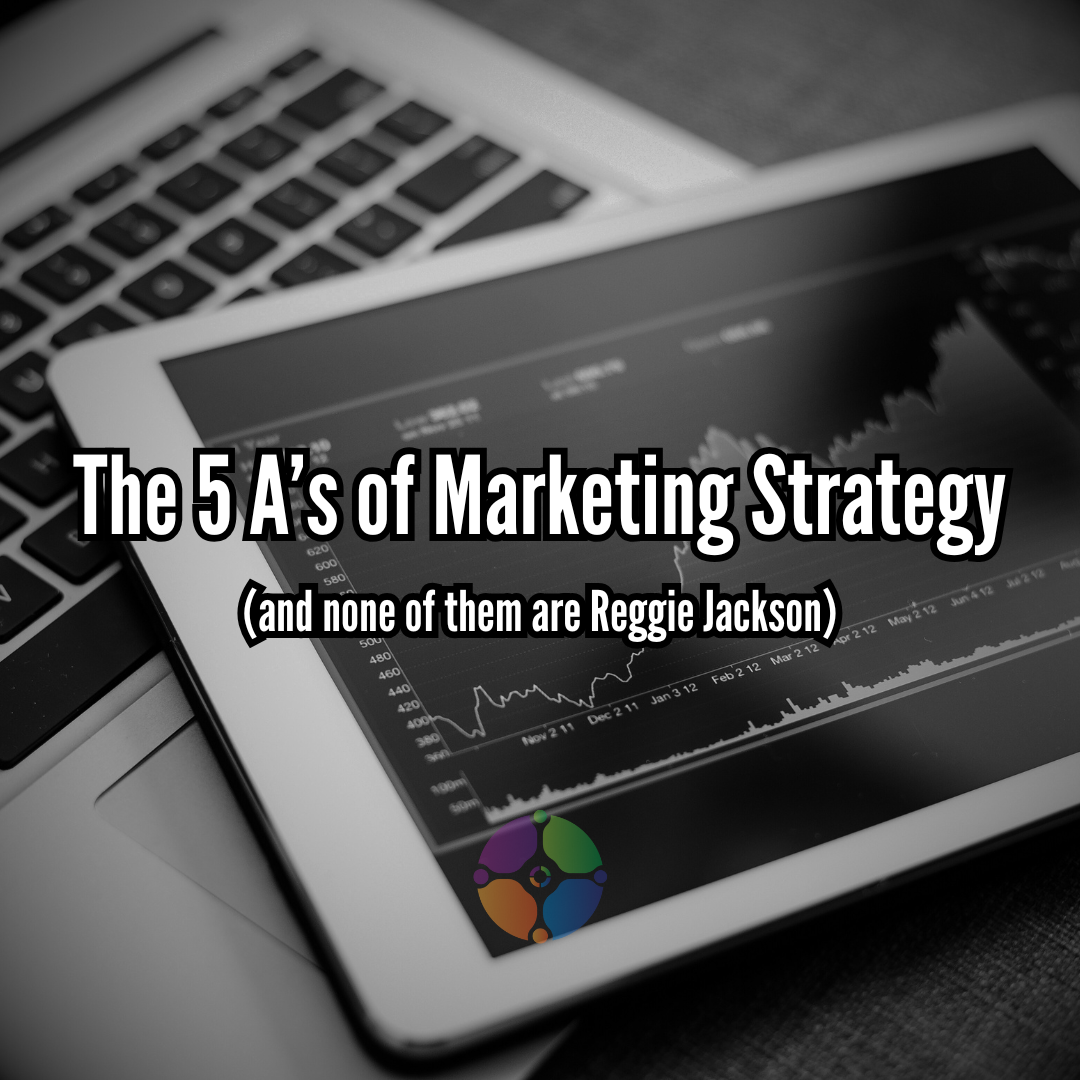The 5 A's of Marketing Strategy

How to Build a Strong Marketing Strategy Using the 5 A’s
A well-structured marketing strategy is the key to sustainable business growth. Many businesses, especially those that have relied on word-of-mouth referrals, find it challenging to expand their reach to new audiences. While referrals can be a great source of trust and credibility, they are not always predictable or scalable. Without a clear strategy to attract and convert new customers, businesses can stagnate. One of the most effective frameworks for creating a results-driven marketing strategy is the 5 A’s: Awareness, Appeal, Ask, Act, and Advocacy.
By following this framework, you can have a guide to help you think more strategically about your marketing and the content you'll be creating to help you make a plan that is SMART and sustainable over the long haul. The more you plan, the more you can avoid feeling frustrated and wanting to quit because that is the biggest mistake businesses make when they are trying to grow, they are too inconsistent and quit things too soon. Let’s break down each of the 5 A’s and how you can apply them to your marketing strategy.
Awareness: Getting in Front of Your Ideal Customers
The first step in any marketing strategy is creating awareness. If people do not know your business exists, they cannot become customers. Awareness-building tactics include:
- Content Marketing: Creating blog posts, videos, and infographics that provide valuable information to your target audience. If you want to be seen, you'll need content. Lots and lots of content. More than you are thinking right now (if you're here reading this actually). Whatever the number you think it is, you'll need more.
- Search Engine Optimization (SEO): Ensuring your website ranks well on Google and other search engines for relevant keywords. If you're not already executing an SEO strategy, you are behind your competition.
- Social Media Marketing: Leveraging platforms like LinkedIn, Instagram, and Facebook to increase brand visibility. Your customers are on social media all the time. If you want to be seen by them, you've got to go where they are.
- Paid Advertising: Running targeted ads on Google and social media to reach potential customers quickly. Organic is great, but takes forever these days. You'll need a paid strategy to partner with your organic strategy if you really want to see growth.
A key concept in building awareness is the Rule of 7, which states that a potential customer needs to see your brand at least seven times before they remember it. In a crowded marketplace, visibility is everything. If your business isn't showing up repeatedly where your audience spends time, they will forget you exist. And if you are forgotten, you will never be purchased. This is why consistency in marketing efforts is essential—being seen often enough ensures you have a chance to make a lasting impression.
Appeal: Making Your Brand Attractive
Once potential customers become aware of your brand, the next step is to make it appealing. Appeal is what separates a business that gets ignored from one that gains loyal followers. Here are some ways to increase appeal:
- Brand Positioning: Clearly communicate what makes your business unique.
- High-Quality Visuals & Messaging: Invest in professional branding, photography, and copywriting.
- Customer-Centric Content: Show potential customers how your product or service solves their problems.
- Social Proof: Use testimonials, case studies, and reviews to demonstrate credibility. Be honest with this stuff. So many aren't. The temptation is to just go along with what everyone else is doing, but your brand reputation matters more than short-term gains. Neil Patel has some advice on strategies for social proof.
Creating a strong appeal ensures that your audience sees your brand as a trusted and desirable option.
Ask: Encouraging Engagement
After building awareness and appeal, the next step is the “Ask.” This is where you encourage potential customers to take the next step in the buyer’s journey, whether that’s signing up for an email list, downloading a lead magnet, or scheduling a consultation.
- Clear Calls to Action (CTAs): Every marketing asset should have a clear and compelling next step.
- Lead Magnets: Offer valuable content, such as eBooks or webinars, in exchange for contact information.
- Personalized Outreach: Engage with prospects through email, social media, or direct messaging.
- Landing Pages: Create dedicated pages designed to capture leads effectively.
Without a strong “Ask,” businesses miss the opportunity to convert interested prospects into engaged leads.
Act: Converting Prospects into Customers
Once a lead expresses interest, it’s time to move them toward making a purchase. This stage is all about making the buying process easy and compelling.
- Streamlined Sales Process: Ensure that your checkout or onboarding process is simple and friction-free.
- Limited-Time Offers: Encourage action with promotions that create urgency. Don't do fake urgency though. People see through that now. If you want to use this strategy, be judicious in it's use and make sure you follow through on whatever you are saying to create urgency.
- Personalized Follow-Ups: Use automated email sequences and direct outreach to nurture leads. Don't get nuts though. This is where businesses can really lose people. If you bury them in an automated sequence, not only are they going to unsubscribe from you, they'll be angry when they do it and they'll hate you forever. You don't want people angry about your brand out there in the world. Avoid hammering them with emails and contacts.
- Exceptional Customer Experience: Make purchasing and onboarding a seamless experience. This is what most of you say sets you apart from your competition anyway right? When I ask businesses why do people buy from you, "our service" is one of the top answers.
The “Act” phase is critical because this is where revenue is generated. A frictionless experience ensures that leads turn into paying customers.
Advocacy: Turning Customers into Brand Ambassadors
The final and often overlooked stage in a marketing strategy is advocacy. Happy customers can become your strongest marketing asset by spreading the word about your business.
- Loyalty Programs: Reward repeat customers with discounts or perks.
- Referral Programs: Encourage customers to refer others in exchange for incentives.
- User-Generated Content: Feature customer stories, testimonials, and reviews in your marketing. If you pay for this, and you'll likely have to, then please, for the love of all that is holy, make sure your customer is disclosing that in their content. The FTC requires it and it's a good ethical business practice that not many are following these days.
- Community Building: Create exclusive groups or memberships where customers can engage with your brand.
When customers become advocates, they generate powerful word-of-mouth marketing that helps fuel long-term growth.
Implementing the 5 A’s in Your Marketing Strategy
Applying the 5 A’s—Awareness, Appeal, Ask, Act, and Advocacy—creates a comprehensive marketing strategy that attracts, converts, and retains customers. By focusing on each step, businesses can build a sustainable growth model that doesn’t rely solely on referrals.
If you’re looking to refine your marketing strategy and create a more structured approach to growth, Round 2 It Marketing can help. Our expert team specializes in developing marketing strategies that drive real business results. Schedule a consultation today to learn how we can take your marketing to the next level.
Round 2 It Marketing


